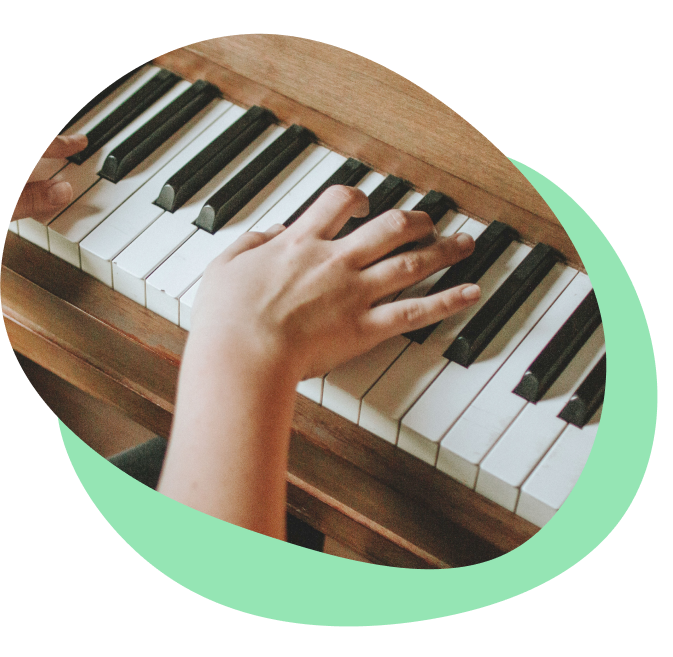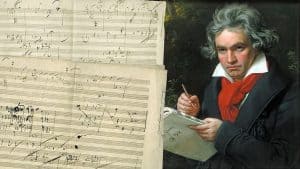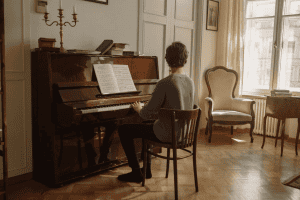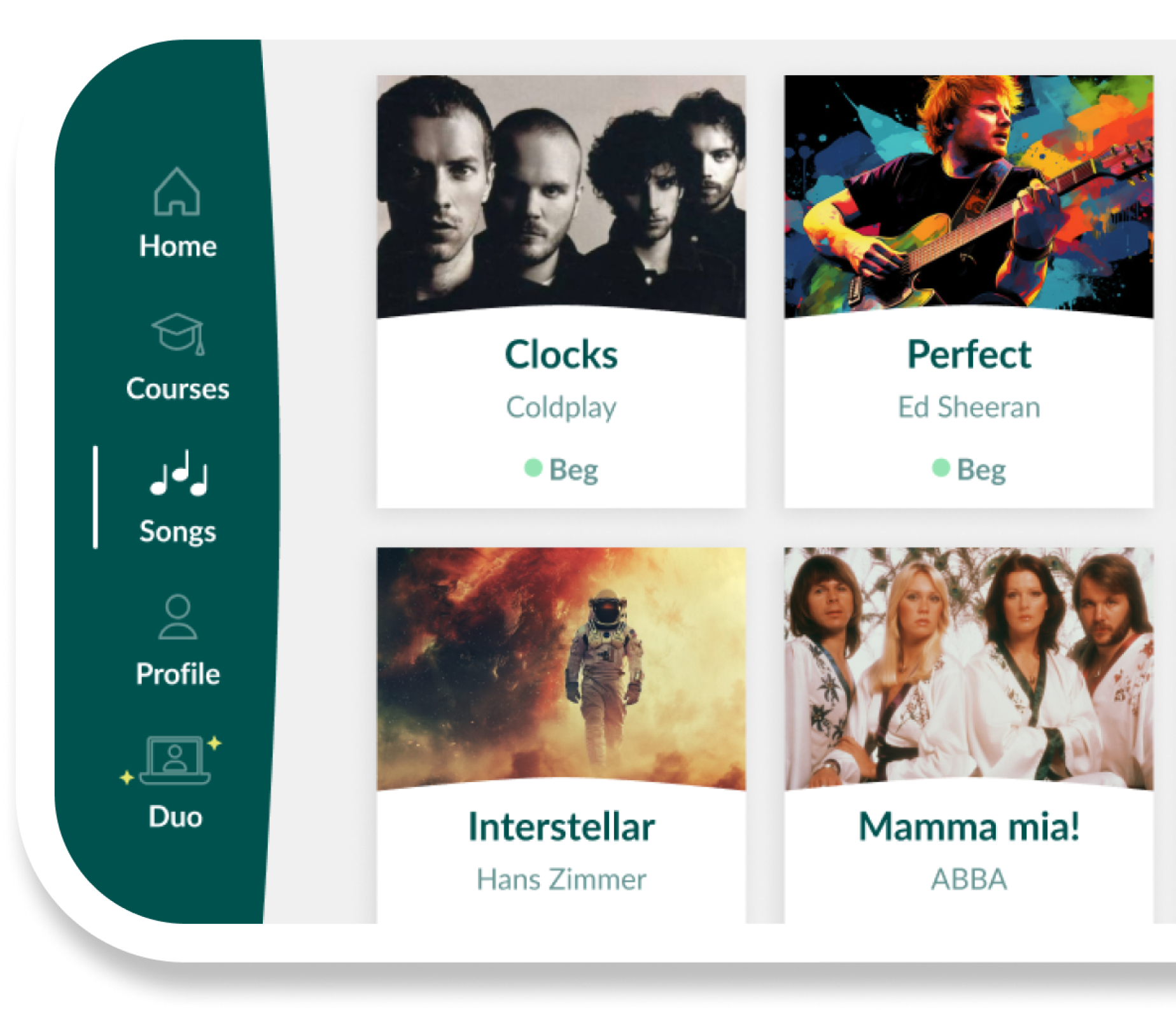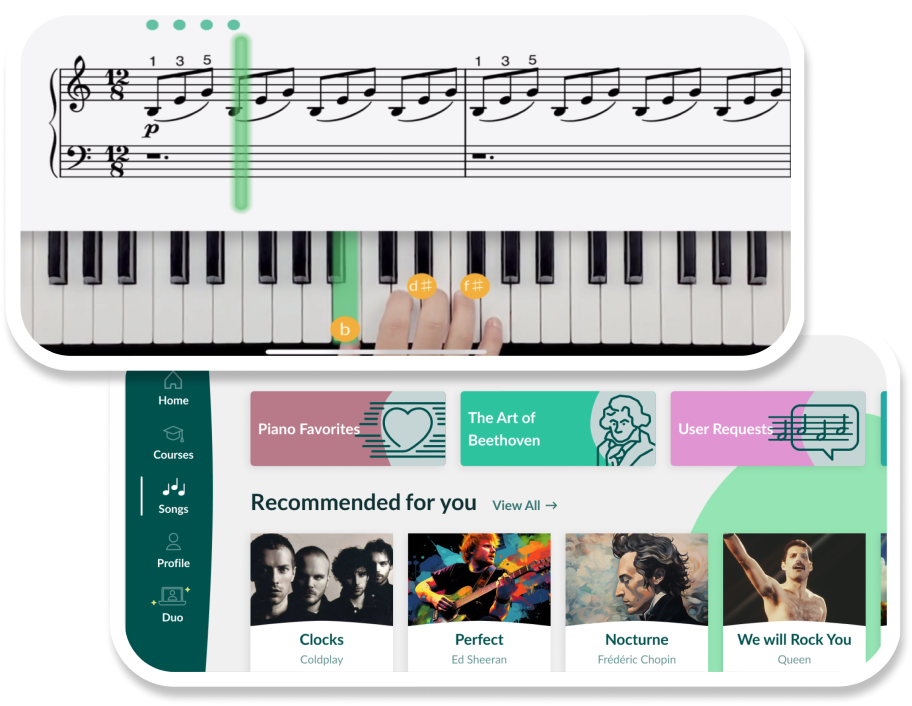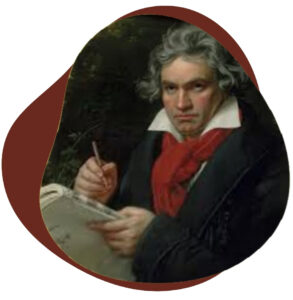
Did you know?
Beethoven composed Ode to Joy while he was almost completely deaf. He couldn’t hear the music, but he still created one of the most powerful melodies ever written.
Do you want to learn Ode to Joy on the piano? Well, you’re in the right place! It’s one of the most well-known tunes in the world, and the best part? It’s also one of the easiest songs to learn on piano.
With this Skoove guide, you’ll learn how to play this iconic piano piece step by step, from the piano notes and finger positions to some simple practice tips. Let’s dive in and bring this joyful melody to life!
Ode To Joy piano tutorial
In this video of our Ode To Joy easy piano tutorial, you’ll see exactly where to place your fingers, how to move smoothly between notes, and how to bring both of your hands together.
How to play Ode To Joy on piano?
Here’s the full beginner-friendly sheet music for Ode to Joy that we will be using in this tutorial. It shows both the right-hand melody and simple left-hand bass notes, along with finger numbers to help you place your hands comfortably on the keys.
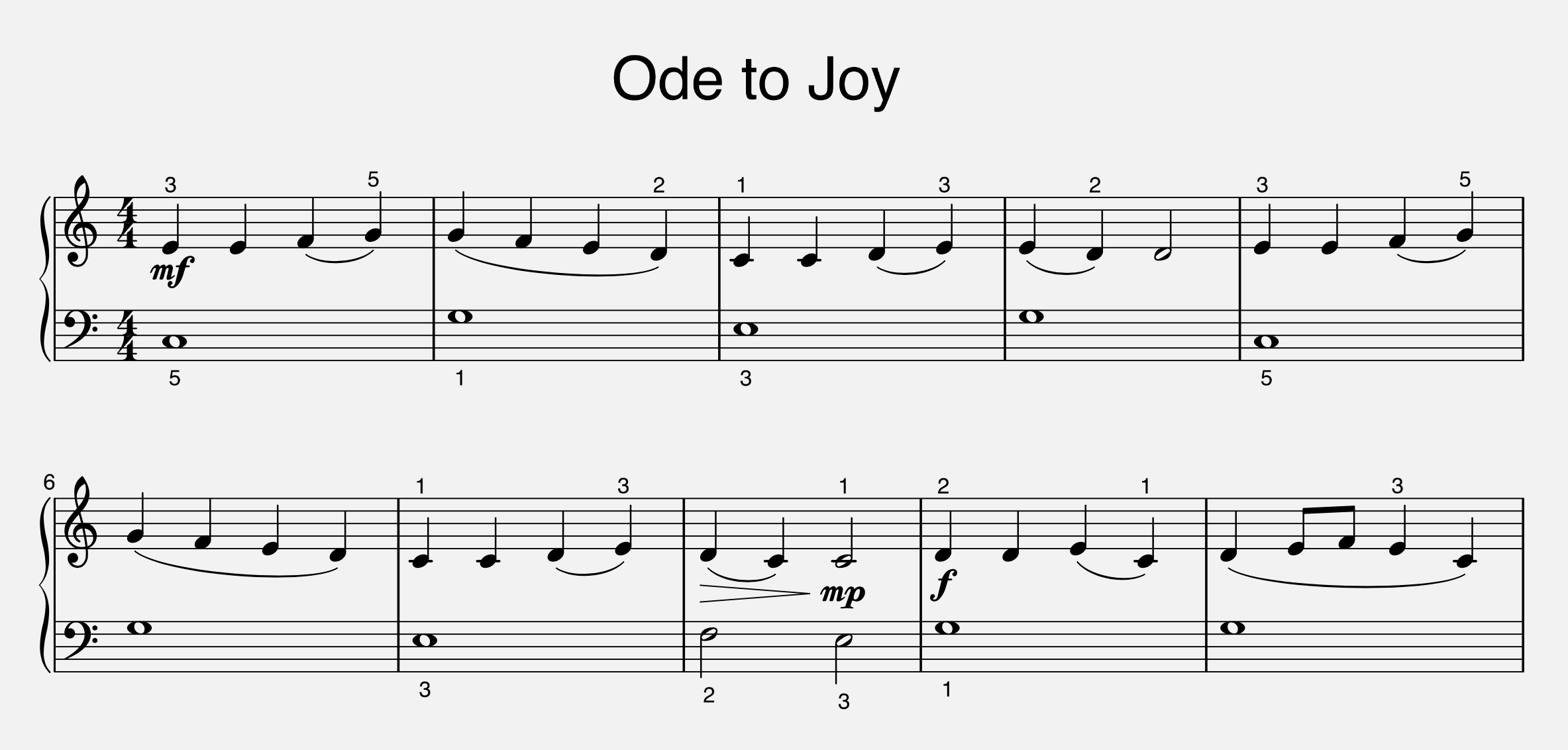
Now let’s break down Ode To Joy piano notes so it’s even easier to follow along.
Here’s the opening melody for your right hand. Start by placing your right thumb on middle C and let the rest of your fingers naturally rest over the following white notes.
E E F G – G F E D – C C D E – E D D
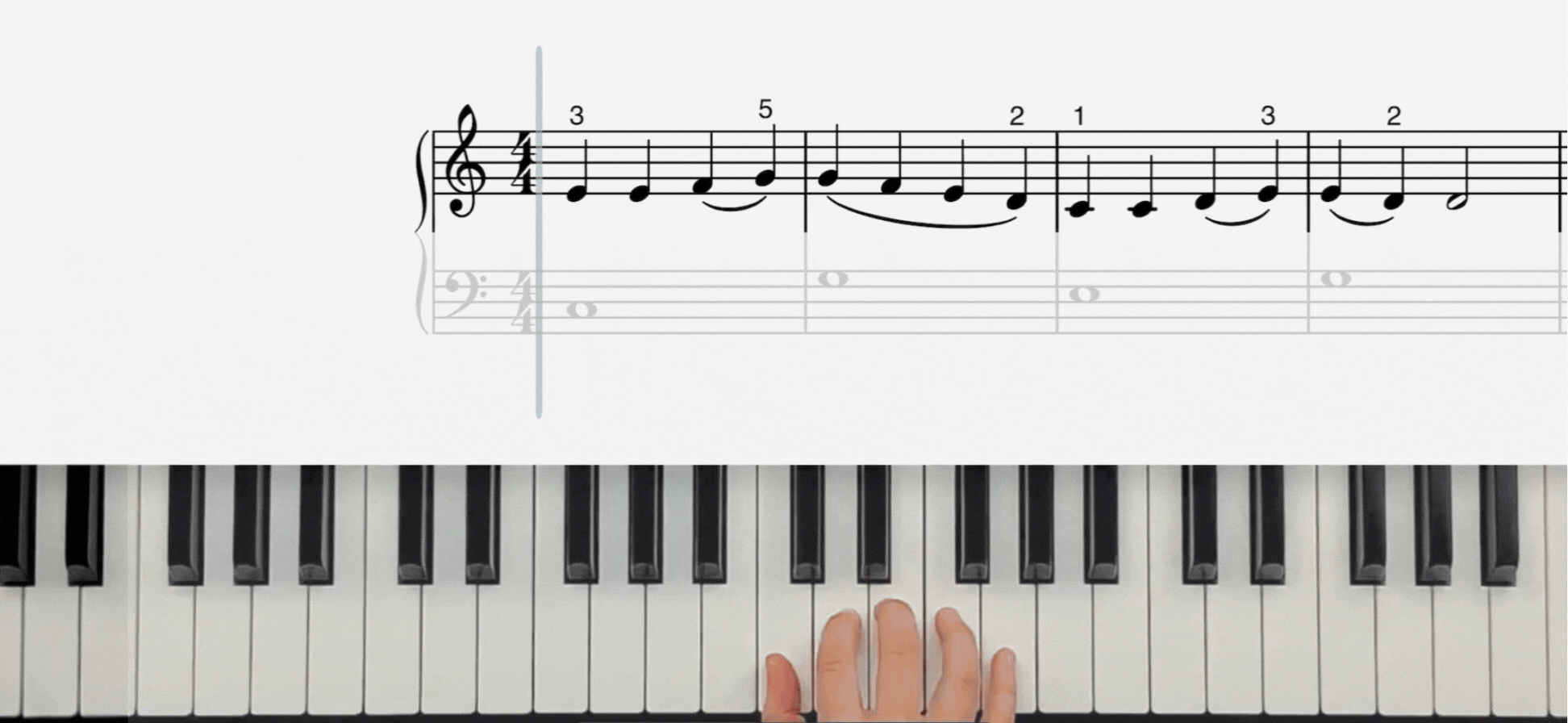
In this beginner arrangement, the left hand plays single bass notes that support the melody.
Here’s the start of the left-hand pattern for the song:
C – G – E – G – C…
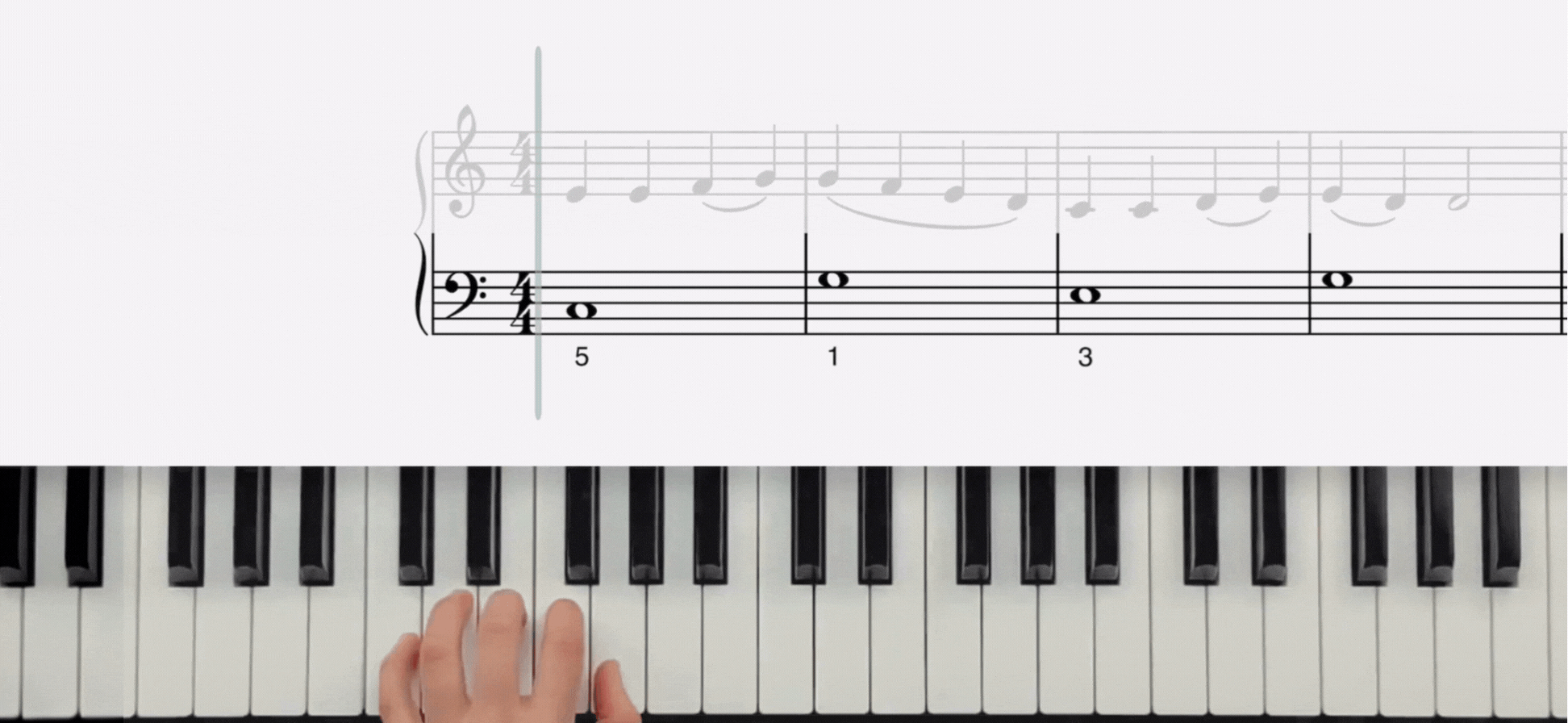
Who wrote Ode To Joy?
Beethoven wrote Ode to Joy as the final movement of his Ninth Symphony, which he completed in 1824. What makes this piece even more remarkable is that Beethoven was almost completely deaf when he composed it. He never actually heard the symphony performed with his own ears, but the music still lives on nearly 200 years later.
Keep the music going with Skoove
You’ve just played one of Beethoven’s most iconic melodies, what a fantastic start to your piano journey! But the joy doesn’t end here.
There’s so much more waiting for you inside the Skoove app. From other Beethoven classics to beautiful beginner-friendly pieces, you can keep building your skills one song at a time. Happy practicing!
Author of this blog post:
Susana Pérez Posada

With over seven years in piano education and a deep passion for music therapy, Susana brings a unique blend of expertise to Skoove. A graduate in Music Therapy from SRH Hochschule Heidelberg and an experienced classical pianist from Universidad EAFIT, she infuses her teaching with a holistic approach that transcends traditional piano lessons. In her writings for Skoove, Susana combines her rich musical knowledge with engaging storytelling, enriching the learning experience for pianists of all levels. Away from the piano, she loves exploring new places and immersing herself in a good book, believing these diverse experiences enhance her creative teaching style.
Published by the Skoove team




